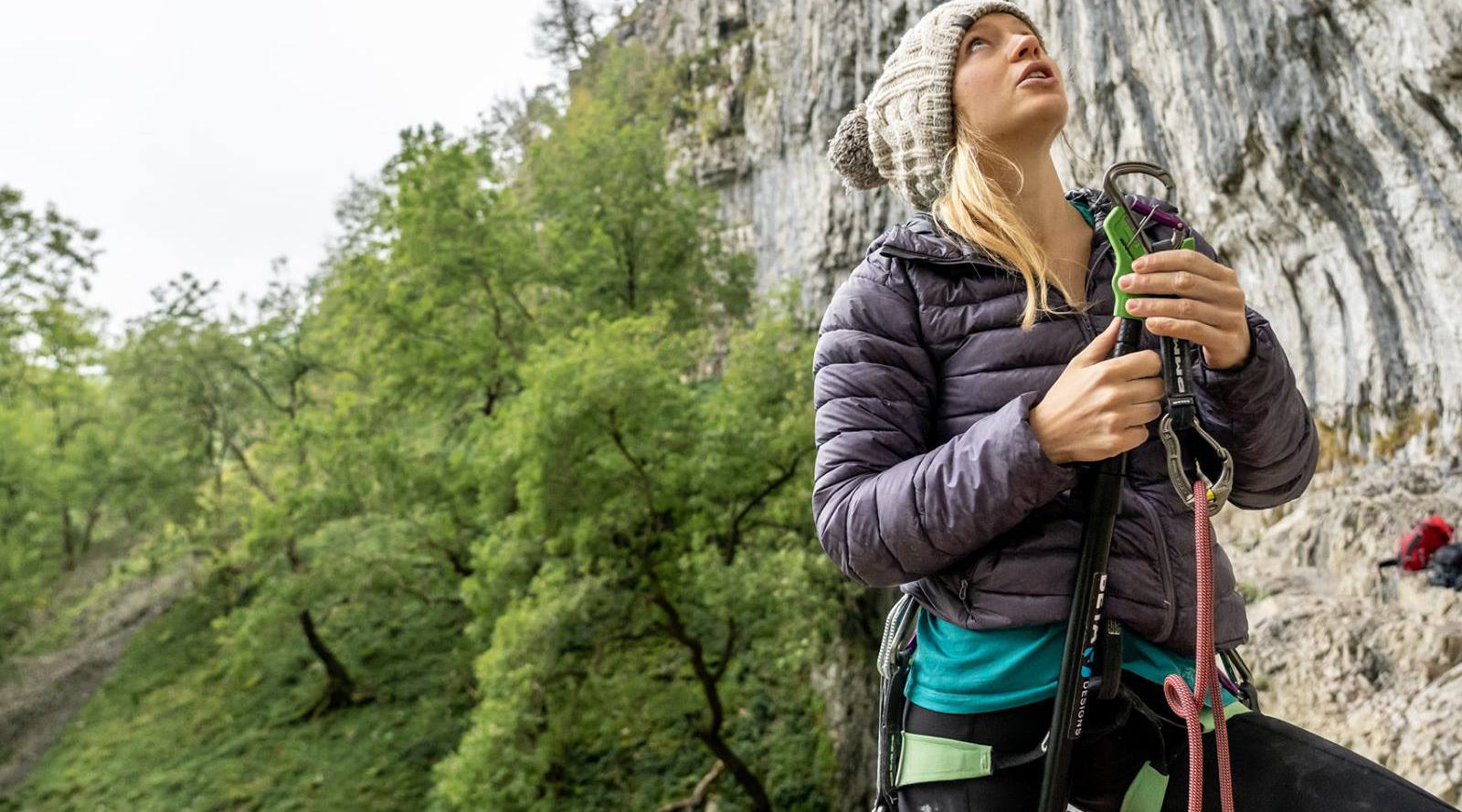By Neil Gresham

The ability to work out the sequence of a route from the ground is an essential sport climbing skill, which makes a huge difference to performance. Time invested on the floor is time and energy saved on the route, and yet so many climbers are prone to just leaping on and seeing what happens. How many times have you fallen off an indoor lead because you’ve failed to spot your colour, or pumped out on a sport route at the crag because you’ve missed a hidden hold? The thing about route reading is that most people are pretty useless at it when they first try it and some climbers find that it actually confuses them even more! This is often used as an excuse not to bother in the future, and many will revert back to the good old ‘work-it-out-as-you-go’ approach. Remember that route reading is a completely separate skill to climbing and your ability to plan and remember sequences will improve massively with a bit of practice. If you do nothing else, then the best tips are to identify all the holds, to pay particular attention to the top and to go through it all twice, especially for routes where the colours are difficult to see; but let’s have a look at things in a little more detail.
Route Reading Levels
The best and most practical approach for route reading is to break it down into a series of clearly defined levels or stages. These should be regarded as specific to the grade of route you wish to try, for example, an easy route (say your second or third warm-up) may only require a quick ‘level 1’ route read, where you simply identify all the holds; whereas your hardest onsight for the day deserves a full blown ‘level 4’ analysis where you consider every last detail and go over it numerous times. Another way of looking at this is that less committed or disciplined climbers may only take their route reading as far as level 1 or 2 but more committed folk who actually want to give themselves a decent chance may take things to level 3 or 4. Level 1 route read: eg: 3rd warm-up (50% pump) – identify all holds (including footholds) Level 2 route read: eg: 4th warm-up route (70% pump) – as above + hand sequence. Go through it twice Level 3 route read: eg: 5th warm-up route (90% pump) –as above + rests + clips. Go through it three times. Level 4 route read: onsight target – as above + foot sequence. Go through it four times.
Level 1: Identify all holds
- View the route from a variety of angles and from far back to see round bulges and to view the top.
- Pay particular attention to widely placed footholds.
Level 2: Hand Sequence
- Move around to see the good parts of each hold. Go in to the base to view undercuts and to the side to view side-pulls or to tell if holds are in-cut.
- Pay particular attention to the top and move well back to do this. Remember that it’s the top of the route where you will be prone to getting tunnel vision and missing holds.
- Look for chalk prints to tell hold orientation (but beware false prints!)
- Rubbered holds with no chalk are almost certainly footholds.
- Confusing sequences don’t give you an excuse not to bother trying to work them out. List the options in order and decide when you get there after feeling the holds. The classic scenario is whether or not to cross-over, match or go-again.
- Identify key ‘marker’ holds if you can’t remember the entire route – ie: left hand must be on that hold then the rest of the sequence will follow.
- Go through it once slowly and then (crucial) go through it again – this is when you will learn it.
Level 3: Hand Sequence & Rests + Clips
- Look for the best holds that are at the optimum height for clipping - the quickdraw should usually be between chest and eye level.
- Consider high clipping only for the first two or three clips, or on the rest of the route - only from good holds (or undercuts) before cruxes or steep sections.
- Look for double clips (indoors only) or ‘mid-move’ clips (if you can’t clip from a fixed position)
- Look out for rests such as bridge positions, heel hooks, kneebars or projecting holds that you can ‘cup’ with the side of your hand to relax your grip
- Go through it three times in total, paying special attention to the top.
Level 4: Hand Sequence, Rests & Clips + Foot Sequence
- It is very difficult to guess your foot sequence exactly right but it is still worth trying! Beginners should not attempt this as it is likely to cause confusion.
- Look out for moments when a flag could save you from swapping feet twice in a row, and on steep routes, always go for the classic ‘outside edge’ position that makes things so much easier.
- For roofs and really steep panels always consider opportunities for heel-hooks, toe-hooks and bicycling in order to stop your feet from swinging off.
- Most intermediate to advanced level climbers should be able to have a good go at this, but the toughest level is to consider the exact order in which the hand sequence relates to the foot sequence.















